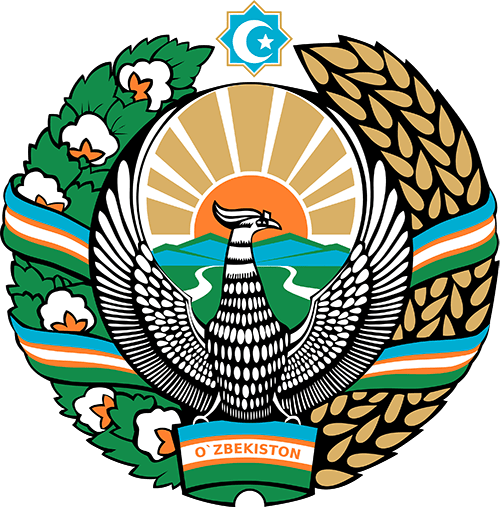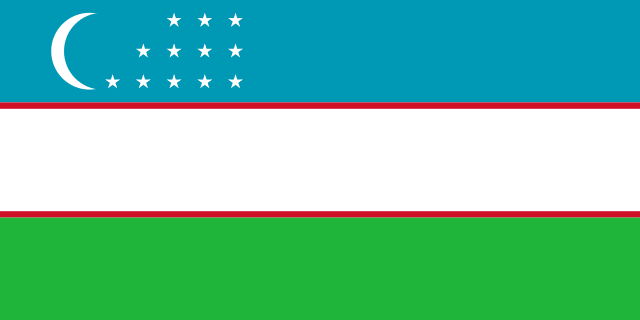ПРЕДОПЕРАЦИОННОЕ КОРОНАРНОЕ ВЫТЯЖЕНИЕ (КВ), В КОМПЛЕКСЕ ХИРУРГИЧЕСКОГО ЛЕЧЕНИЯ ТЯЖЁЛЫХ ФОРМ СКОЛИОЗА
Умарходжаев Ф.Р., Ташкентский Педиатрический Медицинский Институт
Матюшин А.Ф., Федеральное Государственное Бюджетное Учреждение Новосибирский НИИТО имени Я.Л. Цивьяна, г. Новосибирск, Россия
Резюме
На основании данных литературных источников установлено, что лечебно-профилактические средства предоперационной подготовки, такие как коронарное вытяжение (КВ), методика систематических вытяжений подвешиванием далеки от совершенства и малопригодны для современной функциональной диагностики. Сомнительная
эффективность, высокий (более 50%) риск осложнений, размытые показания и продолжительные сроки пребывания, ставят данные методы в разряд редко используемых, громоздких лечебно-профилактических средств.
Ключевые слова: сколиотическая болезнь, коронарное вытяжение, предоперационная подготовка, дети и подростки.
Первая страница
163
Последняя страница
166
Для цитирования
Умарходжаев Ф.Р., Матюшин А.Ф., Предоперационное коронарное вытяжение (КВ), в комплексе хирургического лечения тяжёлых форм сколиоза // Евразийский вестник педиатрии. — 2019; 1 (1):163-166 https://cutt.ly/FcwqsFv
Литература
1. Умарходжаев Ф.Р., Матюшин А.Ф. Этапная сегментарная реконструкция и инструментальная коррекция сколиотических деформаций 100 º и более. //Сборник тезисов IX съезда травматологов – ортопедов России. Сара- тов,15-17 сентября 2010 года. Том 1.-С.699-700.
2. Умарходжаев Ф.Р. Современные аспекты и исторические перспективы применения средств оценки мобильности сколиотической деформации. //Медицинский журнал Узбекистана №5. 2016.89-92.
3. В. А. Гаврилов, Г. Н. Филиппова, Г. Е. Булдакова «Способ лечения кифосколиоза у детей» 1984. //Бюл. № 39 А.С. SU 1119703 A 61 N 1/36;
4. Hamzaoglu A., Ozturk C., Aydogan M., Tezer M., Aksu N., Bruno M.B. Posterior only pedicle screw instrumentation with intraoperative halo-femoral traction in the surgical treatment of sever scolosis (> 100°). //Spine. 2008; 33 (9): 979–983.
5. Rinella A., Lenke L., Whitaker C., et al Preoperative halo — gravity trac-tion in the treatment of severe scoliosis and kyphosis. Spine. 2005; 30: 475–482.
6. Li M., Fang X., Li Y. Et al. Successful use of posterior instrumented spi-nal fusion alone for scoliosis in 19 patients with neurofibromatosis type-1 followed up for at least 25 months. //Arch. Orthop. Trauma Surg. 2009; 129: 915–921.
7. Buchowski J.M., Skaggs D.L., Sponseller P.D. Temporary internal dis-traction as an aid to correction of severe scoliosis. //J. Bone Joint Surg. Am. 89/ — 2007. — P. 297- 309.
8. Hamzaoglu A., Tezer M., Talu U. L assessment of curve flexibieiy in adolescent idiophathic scoliosis //Spine. – 2005. – vol. 30. – P.1637-1642.
9. Jasewicz B.I., Potachek T., Szczesniqk A., Tesiorowski M. Retrospective study of two-stage surgery in the treatment of scoliosis exceeding 100 de-gress-assessment incliaing spinal balance evaluation // Orthop. Travmatol. Rehabil. – 2009. – vol.11(6). – P. 495-500.
10. Lenke L.G., O’Leary P.T., Bridwell K.H. Posterior vertebral column resec-tion for severe pediatric deformity // Spine. – 2009. – vol.34. – P. 2213–2221.
11. Mehlman C.T., Al-Sayyad M.J., Crawford A.H. Effectiveness of spinal release and halo-femoral traction in the management of severe spinal de-formity // J. Ped. Orthop. – 2004/ — vol. 24. – P. 667–673.
12. Park D.K., Braaksma B., Hammerberg K., Sturm P. The effect of long-term halo traction in pediatric deformity in: 16 th IMAST. — //Vienna, Austriya, 2009. – P. 338
13. Potachek T., Jasewicz B.I., Tesiorowski M., Zarzycki D., Szczesniak A. Treatment of idiopathic scoliosis exceeding 100 degrees-comparison of different surgical techniques. // Orthop. Travmatol. Rehabil. — 2009. – vol. 11(6). – P.485-494.
14. Qian B.P., Qiu Y., Wang B. Brachial plexus palsy associated with halo traction before posterior correction in severe scoliosis // Stud. Health. Technol Inform. – 2006. – vol. 123. – P. 538-542.
15. Rinella A., Lenke L., Whitaker C. Perioperativ halo — gravity traction in the treatment of severe scoliosis and kyphosis // Spine. – 2005. – vol.30. – P. 475–482.
16. Sponseller P.D., Takenaga R.K., Newton P. The use of traction in the treatment of severe spinal deformity // Spine. – 2008. – vol.33. – P. 2305–2309.
17. Watanabe K., Lenke L.G., Bridwell K.H., Kim Y.L., Kim Y.W., Kim Y.B., Hensley M., Stobbs G. Compasion of radiographic outcomes for the treatment of scoliotic curves greater than 100 degrees. Wires versus screws. // Spine. – 2008. – vol. 33. – P. 1084–1092.
18. Watanabe K.L., Lenke L.G., Bridwell K.H., Kim Y.J. Efficacy of perioperative halo-gravity traction for treatment of severe scoliosis (>100o), //J. Orthop. Sci. – 2010. – vol.15 (6). – P. 720-730.
19. Shi YM1, Hou SX, Li L, Wang HD, Gao TJ, Wei X. [Prevention and management of the neurological complications during the treatment of severe scoliosis]. // Zhonghua Wai Ke Za Zhi. 2007 Apr 15;45(8):517-9.
20. Tan R, Ma H.S., Zou D.W., Wu J.G., Chen Z.M., Zhou X.F., Zhou J.W. Surgical treatment of severe scoliosis and kyphoscoliosis by stages. //Chin Med J (Engl). 2012 Jan;125(1):81-6.
21. Park J.Y., Park G.D., Lee S.G., Lee J.C. The effect of scoliosis angle on center of gravity sway. // J Phys Ther Sci. 2013 Dec;25(12):1629-31
22. Kulkarni A.G., Shah S.P. Intraoperative skullfemoral (skeletal) traction in surgical correction of severe scoliosis (>80°) in adult neglected scolio-sis. //Spine. 38(8):659–664, APR 2013 15;38(8):659-64
23. Song X.Z., Yi G.L., Wang W.J., Li H.K., Wang D, Song L.Z. [Analysis of the clinical effects of the modified halo pelvic frame for the treatment of severe scoliosis with rigidity]. // Zhongguo Gu Shang. 2011 Sep;24(9):737-41.
24. Suh S.W., Modi H.N., Yang J.H., Hong J.Y. Idiopathic scoliosis in Kore-an schoolchildren: a prospective screening study of over 1 million chil-dren. // Eur Spine J. 2011 Jul;20(7):1087-94.
25. Newton P.O., Perry A, Bastrom T.P., Lenke L.G., Betz R.R., Clements D, D’Andrea L. Predictors of change in postoperative pulmonary function in adolescent idiopathic scoliosis: a prospective study of 254 patients. //Spine (Phila Pa 1976). 2007 Aug 1;32(17):1875-82.
26. Suh SW, Modi H.N., Yang J, Song H.R., Jang K.M. Posterior multilevel vertebral osteotomy for correction of severe and rigid neuromuscular sco-liosis: a preliminary study. //Spine (Phila Pa 1976). 2009 May 20;34(12)
27. Crostelli M, Mazza O, Mariani M, Mascello D. Treatment of severe scoli-osis with posterior-only approach arthrodesis and all-pedicle screw in-strumentation. //Eur Spine J. 2013 Nov;22
28. Luhmann SJ1, Lenke LG, Bridwell KH, Schootman M. Revision surgery after primary spine fusion for idiopathic scoliosis. //Spine (Phila Pa 1976). 2009 Sep 15;34(20):2191- 7.
29. Dewald RL, Ray RD: Skeletal traction for the treatment of severe scolio-sis. The University of Illinois halohoop apparatus. //J Bone Joint Surg Am 1970, 52:233-238.
30. Edgar MA, Chapman RH, Glasgow MM: Preoperative correction in ado-lescent idiopathic scoliosis. //J Bone Joint Surg Br 1982, 64:530-535.
31. Floman Y, Penny JN, Micheli LJ, Riseborough EJ, Hall JE: Osteotomy of the fusion mass in scoliosis. //J Bone Joint Surg Br 1982, 64:1307-1316.
32. Koller H, Zenner J, Hitzl W, Meier O, Ferraris L, Acosta F, Hempfing A (2012) The morbidity of open transthoracic approach for anterior scolio-sis correction. // Spine 25:82-90.
33. Winter R.B., Lonstein J.E. Idiopathic scoliosis. In: Rothman R.H, Sime-one F.A, eds. // The Spine. 3 rd ed. Philadelphia, PA: Saunders; 2010:411.
34. Sink E.L., Karol L.A., Sanders J, Birch J.G., Jonston C.E., Herring J.A. (2001) Efficacy of perioperative halo-gravity traction in the treatment of severe scoliosis in children. //J Pediatr Orthop 21:519-524.
35. Di Silvestre M, Bakaloudis G, Lolli F, Vommaro F, Martikos K, Parisini P Posterior fusion only for thoracic adolescent idiopathic scoliosis of more than 80o: pedicle screw versus hybrid instrumentation. // Eur Spine (2008) J 17:1336-1349.
36. Suk S.L., Kim W.J., Lee S.M., et al. Thoracic pedicle screw fixation in spinal deformities: are they really safe? // Spine 2002; 26:2049-57.
37. Arlet V, Papin P, Marchesi D: Halo femoral traction and sliding rods in the treatment of a neurologically compromised congenital scoliosis: tech-nique. //Eur Spine J 1999, 8:329-331.
38. Lenke L.G., Betz R.R., Harms J, Bridwell K.H., Clements D.H., Lowe T.G., et al. Adolescent idiopathic scoliosis: a new classification to deter-mine extent of spinal arthrodesis. //J Bone Joint Surg (Am) 2013; 83:1169-1181.
39. Saeed M.U., Dacuycuy MAC, Kennedy D.J. Halo pin insertion-associated brain abscess. Case report and review of literature. // Spine (2007)32:E271-E274.
40. Yang J.H. Does delaying surgery in immature adolescent idiopathic scoli-osis patients with progressive curve, lead to addition of fusion levels? / JH Yang, AW Bhandarkar, B Rathanvelu, JH Hwang, JY Hong, HN Modi, SW Suh // Eur Spine J. 2007 Dec;23(12):2672-9.
41. Huang M.J., Lenke L.G: Scoliosis and severe pelvic obliquity in a patient with cerebral palsy: surgical treatment utilizing halofemoral traction. //Spine 2001, 26:2168-2170.
42. Caubet J.F., Emans J.B. Halo-gravity traction versus surgical release be-fore implantation of expandable spinal devices: a comparison of results and complications in early-onset spinal deformity. //J Spinal Disord Tech 2011; 24:99-104.
43. Limpaphayom N, Skaggs D.L., McComb G, Krieger M, Tolo V.T. Com-plications of halo use in children. // (2007) In: 42nd annual meeting of the SRS, Edinburgh, Scotland.
Статья доступна ниже



